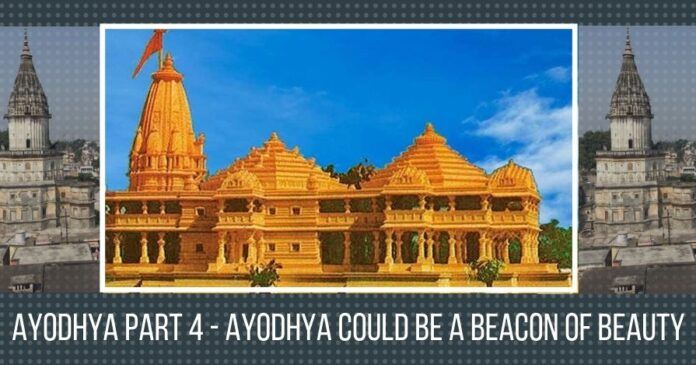
Part 1 of this series can be ‘accessed ‘ here. Part 2 of this series can be ‘accessed ‘ here. Part 3 of this series can be ‘accessed ‘ here. This is Part 4.
That the history of Ayodhya is grand cannot be denied, on the second page of the Indian Constitution- Part III “Fundamental Rights” is an illustration by Bengali artist Nandalal Bose of Lord Ram returning to Ayodhya with Sita and Lakshman; surely this still sets the scene for the importance of Ayodhya today.
Ayodhya’s history goes way back, I visited Professor Lokesh Chandra in 2016 to present my “in the footsteps of Ram” documentary idea- with my thanks to Subramanian Swamy for this introduction. Professor Chandra gave me his academic paper about The Princess of Ayodhya of the Iksvaku Dynasty, who was sought by Korean King Surowang to be his Queen, and the numerous fascinating Buddhist connections between India and Korea, (this is impossible to precis so it is attached here). Professor Chandra is one of the most awesome beings one could hope to spend a few minutes with in a lifetime; Prof Chandra has a brilliant and wise Indian brain with every level of knowledge of Indian history, heritage and all the planes of existence, he also has the neatest office and the most charming disposition. Daily he consumes the fruit from a Bel Pather tree in his garden which is apparently the elixir of youth, you would never know Prof Chandra is 91years. The Bengal quince, Bel Pather or Bilva tree is loved by Shiva, as Parvati is omnipresent in all its parts, the trifoliate leaves are symbols of Shiva’s Trishul and His three eyes, these leaves are used in Shiva pujas across India; the Bel or Bael fruits have multiple medicinal properties.
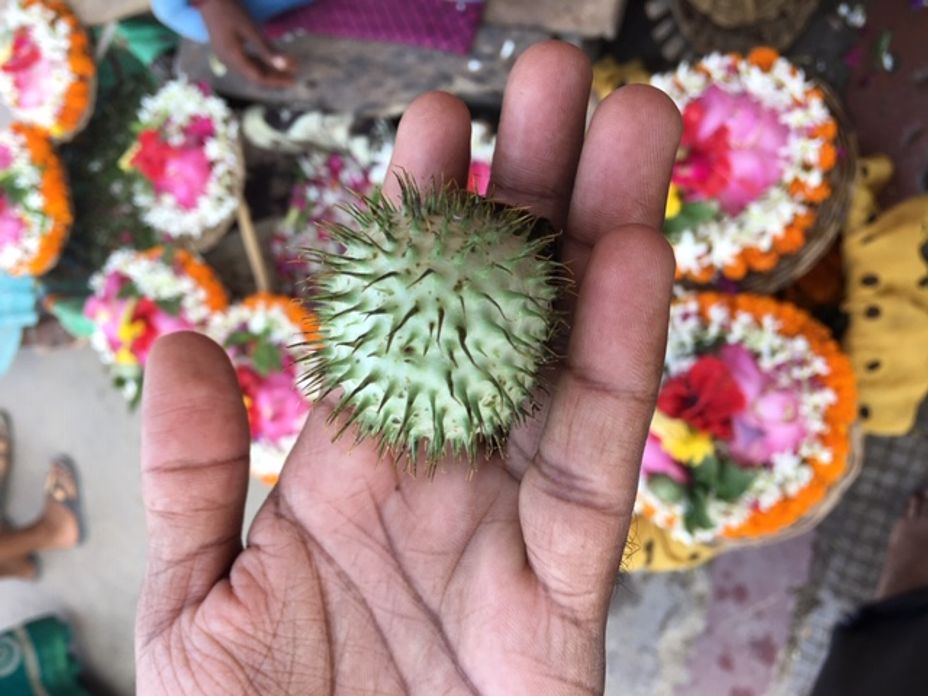
Back to Ayodhya, this was the capital of the ancient Kosala Kingdom; Ravi Naimish, our guide to whom condescension is unknown, told Lakshmi and me that Emperor Vikramaditya from Ambavati (now Ujjain) rediscovered Ayodhya after meeting Prayaga (King of the Tirthas- the Sacred Waters) on the Sarayu. Prayag Raj had come to deposit sins into the Sarayu when he found Vikramaditya searching for the contours of ancient Ayodhya. Prayag Raj advised him to follow the cow droppings and that would delineate the circumference of Ayodhya, where the milk flowed freely from that cow’s udder would be the birthplace of Ram.
Ravi had heard of a piece of land that had been set aside a while back for the construction of a Korean visitors centre and museum but till now nothing had come of it. The city of Ayodhya is in a time capsule, there are still water hand pumps in the street and tangles of cable overhead, on the day of our visit something was being cut and laid into the roadside, the shopkeeper’s wares were veiled in dust.
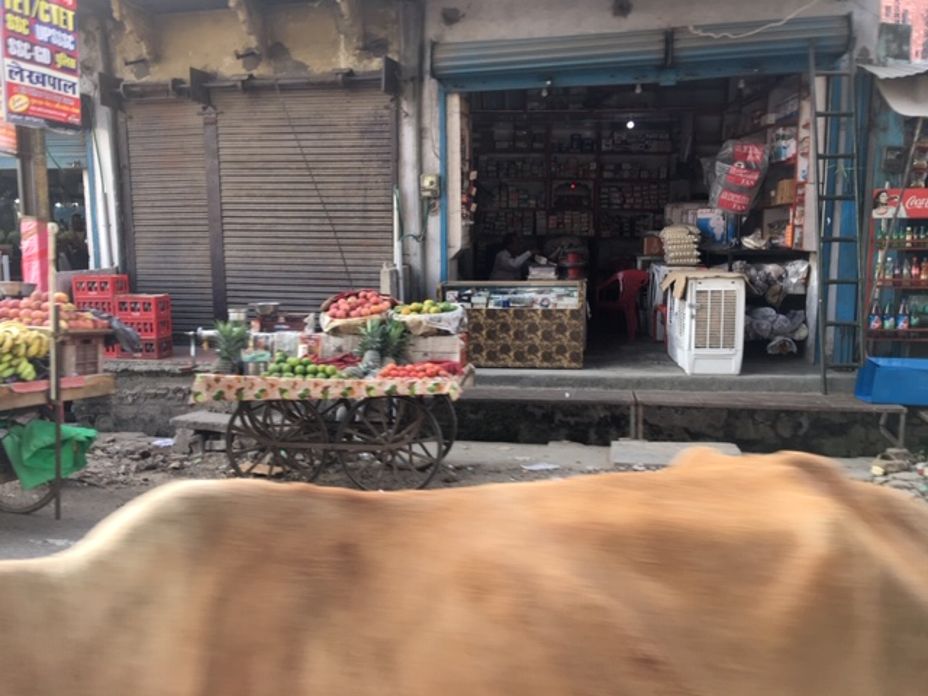
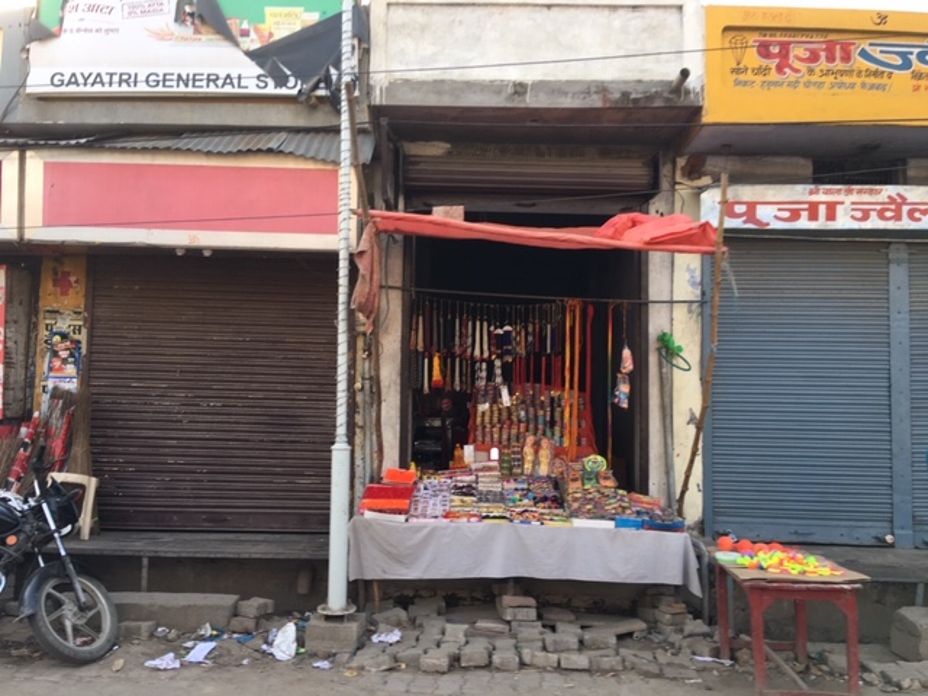
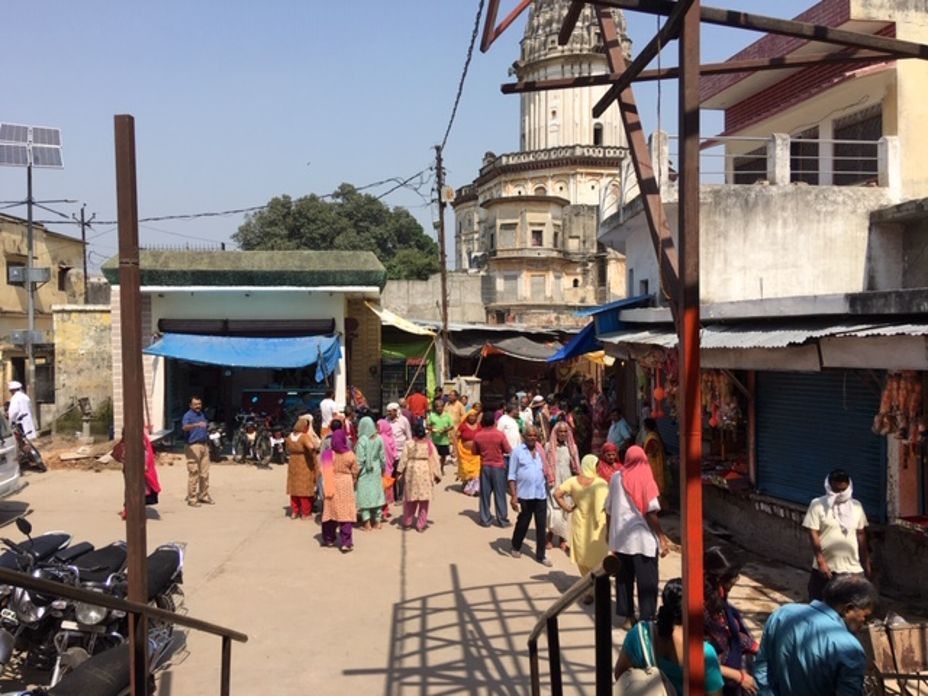
But it is impossible not to be transported because of the sounds of thousands of temples and the accoutrements of religious ritual. We noticed there were fish symbols everywhere in Ayodhya and Faizabad, Vishnu’s first avatar was the fish. But it seems doubtful if things have changed much since Independence, Ayodhya is in a state of fatigue, the facilities are very basic, not even a hotel that our connections would allow us to stay in. Why Ayodhya is in this state perplexes me, surely the way to people’s hearts is through the restoration of this capital of Hinduism. Why do politicians and Bollygarchs fail to see the citizens in Ayodhya are downtrodden; Ayodhya should be a smart city, this society deserves the modernisation of infrastructure and fast speed internet just like the people of Delhi or Chennai. Hygienic facilities and pukka restoration of the classical architecture would benefit not only the citizens of Ayodhya and the pilgrims, but it would also attract tourists; organised spiritual tourism is a sector still in development in India.

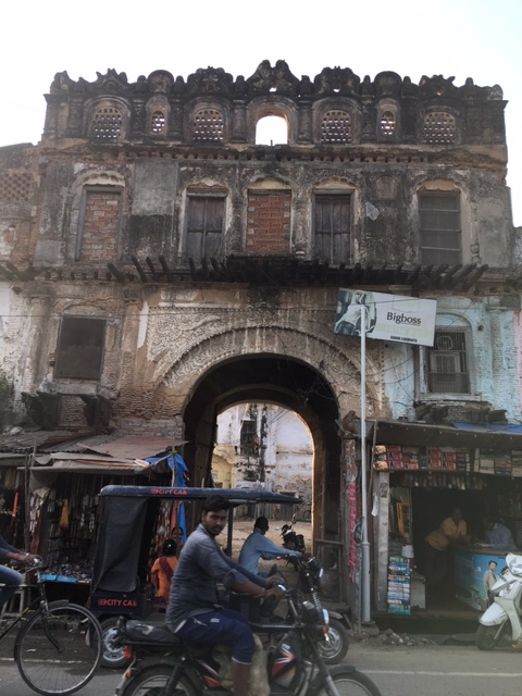
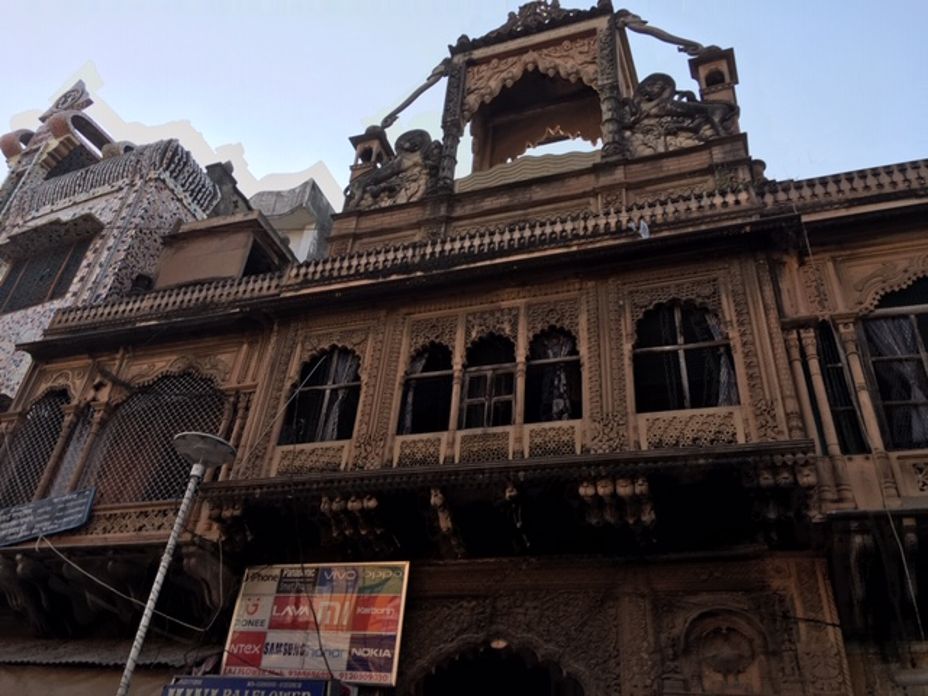
Imagine a C21st Ayodhya where citizens are healthy, employed and contented as in days of yore. An environmentally pioneering city with beautiful gates and ramparts, attractive urban planning with leafy squares and public parks, cosmology-astrology/ Sanskrit/ Yoga universities, a seat of learning and humanity with libraries, theatres and museums, easily accessed by a really fast train from Delhi. Would all this fit into the dimensions as described in the Ramayana, a city 36miles long and 9miles wide, but morphed into a modern city. The beautiful and sacred coming together, Ayodhya as a beacon of all that is magnificent about India, without making it a Disneyesque theme park.
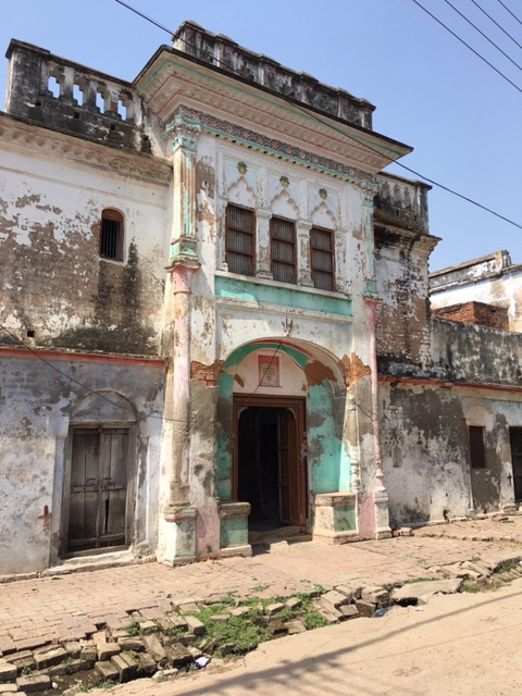 The arduous journeys undertaken by Ram, Sita and Lakshman are perpetually represented in art, literature and reverence; this bears testimony to Rama’s everlasting influence on and interaction with personal integrity and Dharma. Their journey has become a sort of allegorical map to deliverance for our lives today. When we visited Ayodhya in October, what is there is not on such a grand scale as some other devotional sites but the historical authenticity and the intimacy of everyone’s relationship with Ram is palpable.
The arduous journeys undertaken by Ram, Sita and Lakshman are perpetually represented in art, literature and reverence; this bears testimony to Rama’s everlasting influence on and interaction with personal integrity and Dharma. Their journey has become a sort of allegorical map to deliverance for our lives today. When we visited Ayodhya in October, what is there is not on such a grand scale as some other devotional sites but the historical authenticity and the intimacy of everyone’s relationship with Ram is palpable.

Perhaps the renaissance of Ayodhya is not so far away, in March 2017 BJP’s Mahesh Sharma announced a 150crore Ram-Ramayana museum at a site 15kilometres from Ayodhya, and in July 2017 Suresh Prabhu announced the Shraddha Sethu Express from Rameshwaram to Ayodhya. Last week UP Chief Minister Yogi Adityanath announced, at the India Ideas Conclave, that South Korea has been invited to Ayodhya as guests for the Dipotsav (Festival of Lights) on November 6th. The First Lady of South Korea Kim Jung-sook is due to lay the foundation stone of the Queen Suriratna Memorial Project, many Koreans are very sentimental about their Queen, the Princess from Ayodhya.
The fact remains we are still in the age of Ram.
To be Continued…… Part 5 of this series will be written after I have travelled to Sri Lanka and completed the Ramayana trail.
Note:
1. The views expressed here are those of the author and do not necessarily represent or reflect the views of PGurus.
- Dr Swamy takes on China, its bullish attitude and how to dish it back to them - May 6, 2021
- Swamy to restore just 2 more temples against 40k destroyed by Mughals - February 19, 2021
- Let’s talk about Democracy - February 3, 2020

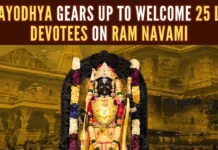
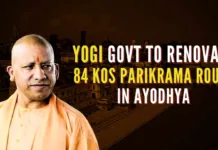








Madam,
The picture you have shown as Bael fruit is not bael fruit but DHATURA fruit which is also dera to Lord Shiva as it is an intoxicant. I can say this with authority as I am from a village and have seen both the fruits and have consumed BEL Sharbat several time.